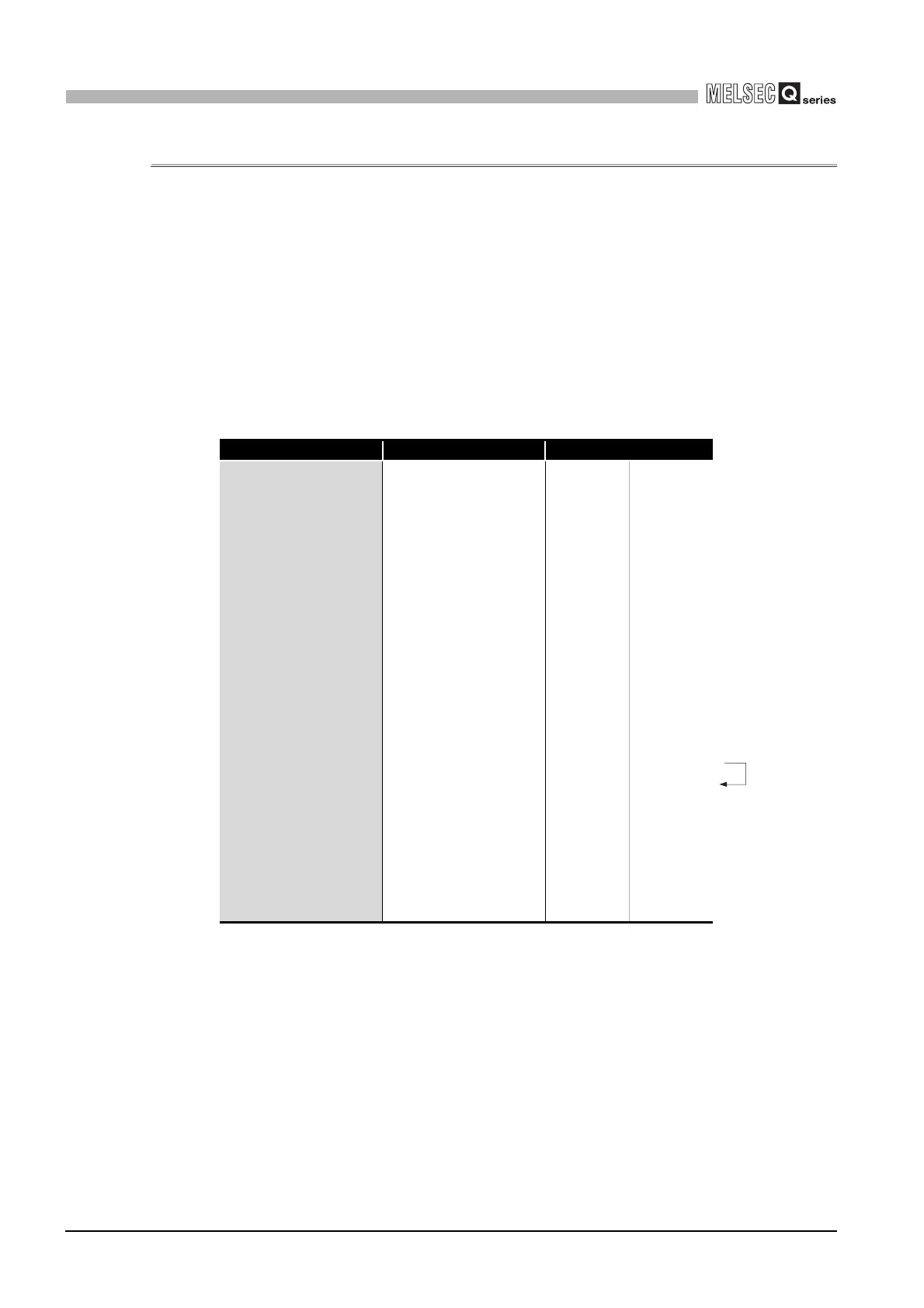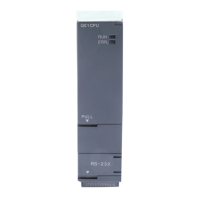3 - 84
3.9 Numeric Values which can be Used in Sequence Programs
3.9.2 HEX (Hexadecimal)
3
SEQUENCE PROGRAM CONFIGURATION AND
EXECUTION CONDITIONS
3.9.2 HEX (Hexadecimal)
(1) Hexadecimal notation
In hexadecimal notation, 4 binary bits are expressed in 1 digit.
If 4 binary bits are used in binary notation, 16 different values from 0 to 15 can be
represented.
Since hexadecimal notation represents 0 to 15 in 1 digit, letters A
H to FH are used to
represent the numbers 10 to 15.
Then, a carry occurs after F
H.
Table3.10 shows the numeric expressions of BIN, HEX and DEC (decimal).
(2) Hexadecimal numeric expression
CPU module registers (data registers, link registers, etc.) consist of 16 bits.
For 16 bits, 0 to FFFF
H can be specified in hexadecimal.
Table3.10 Comparison of BIN, HEX, and DEC Numeric Expressions
DEC (Decimal) HEX (Hexadecimal) BIN (Binary)
0 0 0
1 1 1
2 2 10
3 3 11
• • •
• • •
• • •
9 9 1001
10 A 1010
11 B 1011
12 C 1100
13 D 1101
14 E 1110
15 F 1111
16 10 1 0000
17 11 1 0001
• • •
• • •
• • •
47 2F 10 1111
Carry

